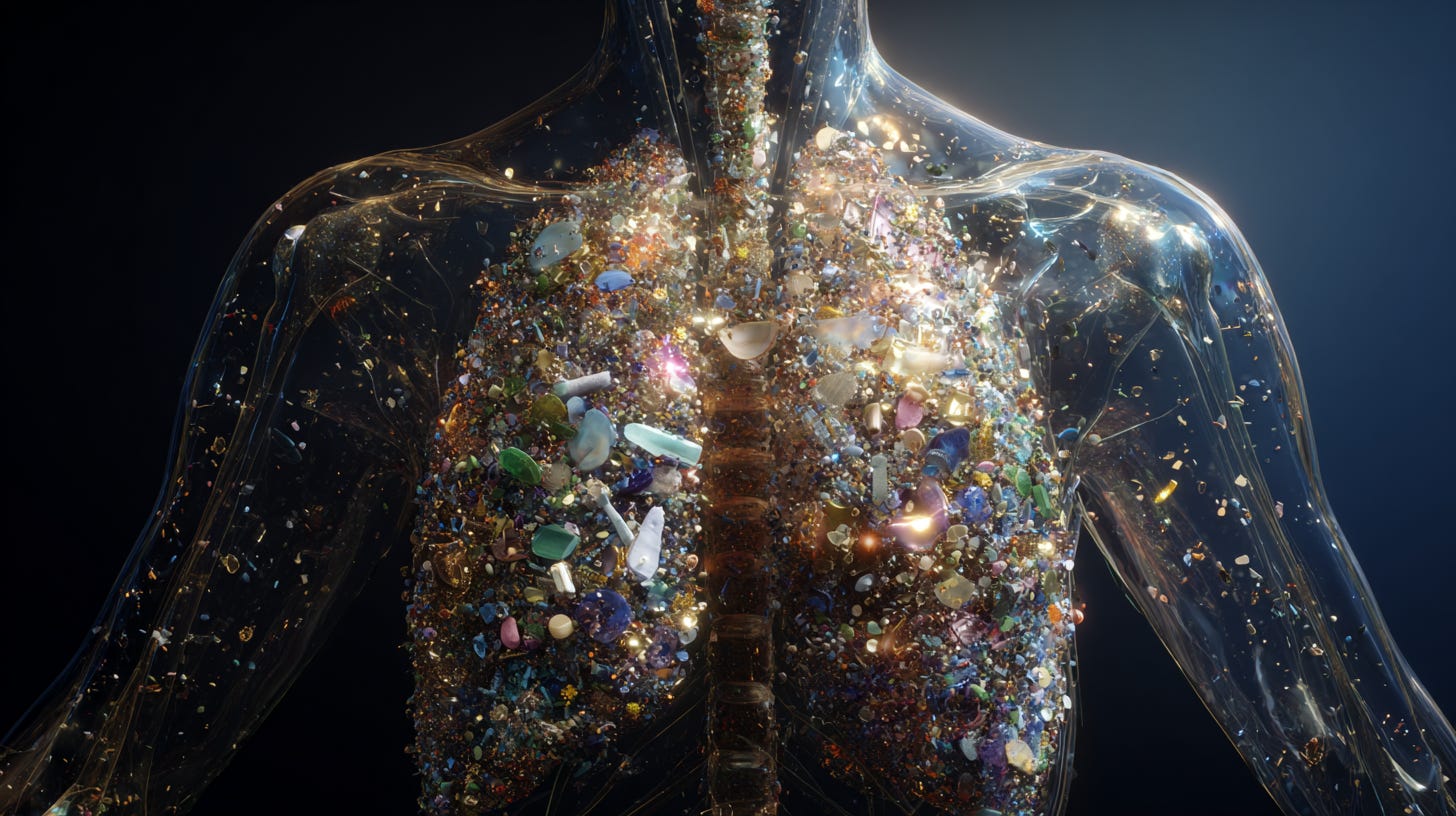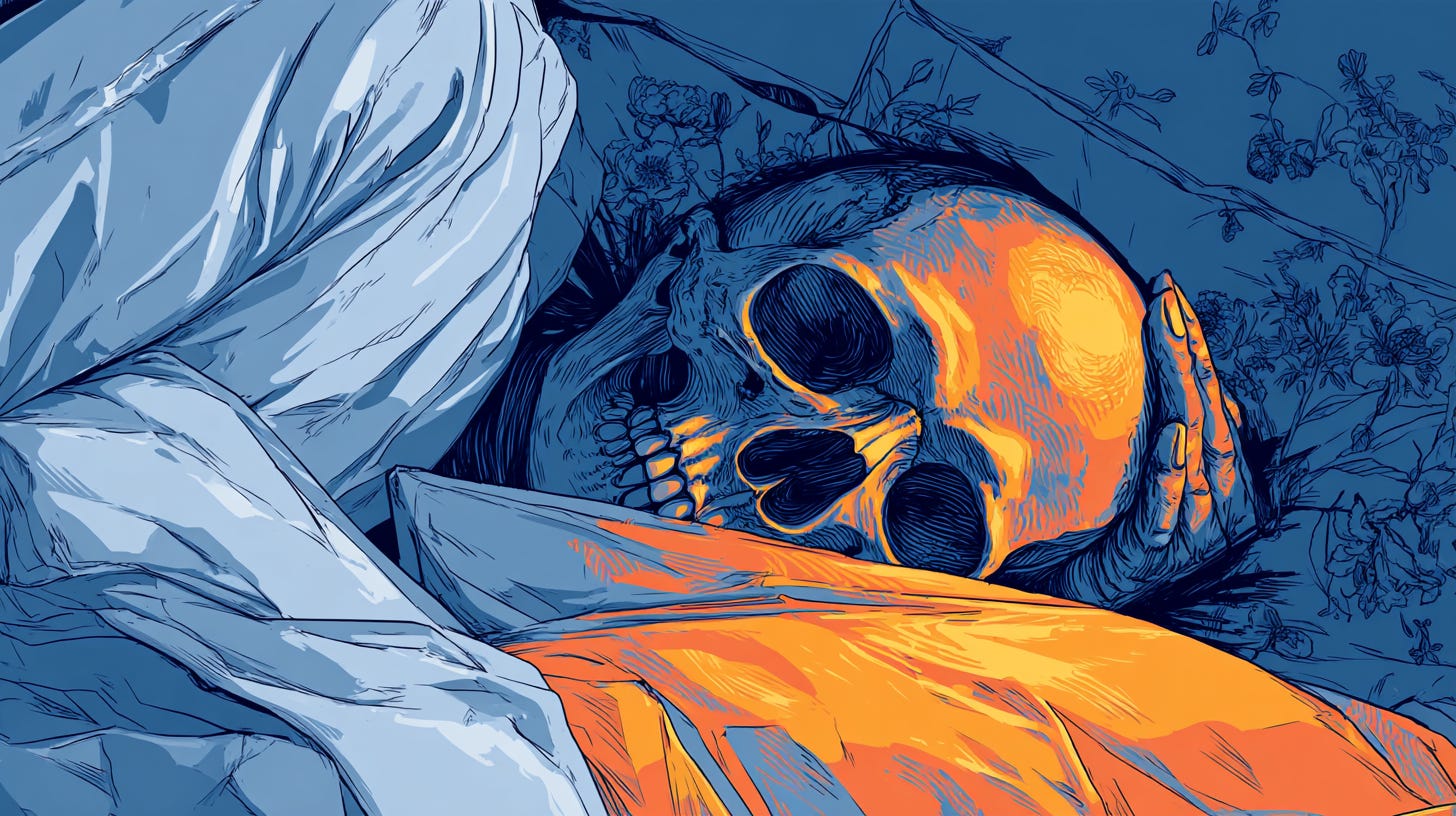Do magic mushrooms help you live longer?
And three other longevity research summaries that will help you age stronger.
Dear reader: If you like this post, please “like” this post! It really does help.
Following all the newsworthy longevity and anti-aging research nowadays is impossible — unless you’re an AGING with STRENGTH subscriber.
As a new feature, I’ll regularly post plain-language summaries of the most interesting anti-aging research, so you can develop your own, highly informed opinions on everything from muscle’s role in anti-aging to building strong metabolic and nutrition habits after 50.
And also: whether psychedelic mushrooms might help you live longer. More on that below.
If you find this article helpful, consider becoming an AGING with STRENGTH supporter — or just make a one-time donation. Your support matters.
Longevity research roundup
This inaugural AGING with STRENGTH anti-aging research roundup includes:
a male advantage in reaping the benefits of several longevity drugs
health impacts of chronic microplastic and nanoplastic exposure
do night owls live shorter lives?
psilocybin (aka magic mushrooms) extends lifespan in human cells
Let’s get to it.
1 | Longevity supplements work better on males, worse in females
Scientists at the National Institute on Aging recently uncovered a startling pattern: nearly every compound that successfully extended lifespan since 2004 worked better (or in some cases, exclusively) in male mice, compared to females. The lone exception was rapamycin, which had a greater positive impact on females.
The study1, published in August, reviewed tests on 54 potential life-extending drugs in more than 30,000 mice over two decades. The findings, published in The Journals of Gerontology, suggest that aging occurs through different mechanisms between sexes. Which then raises big questions about whether blockbuster diabetes drugs like canagliflozin and common medications like aspirin, which extended only male mouse lifespans by up to 22 percent, might have similarly skewed effects in humans.
For paying subscribers: Here’s a table showing all 16 anti-aging drugs’ disparate effects on males and females, with plain-English explanations of each drug’s mechanism and other key findings from this first-of-its-kind study.
Another big question: whether decades of male-dominated clinical trials have systematically overlooked treatments that could benefit women’s longevity. To quote the researchers: “This is the first comprehensive review of the program’s results, with particular emphasis on a striking pattern of sex-specific responses.”
2 | The long-term negative impacts of micro- and nanoplastics
Microplastics have infiltrated virtually every organ in many of our bodies, including our brains, bloodstreams, placentas and reproductive organs. Now there’s new evidence that these ubiquitous pollutants are linked to cardiovascular disease, immune dysfunction and reproductive problems, according to a comprehensive review2 published in Nature Medicine earlier this month by researchers from Vrije Universiteit Amsterdam and other Dutch institutions.
For paying subscribers: Here’s a more in-depth summary of the paper’s insights into the association of micro- and nanoplastics to damaged human health.
The study’s authors caution that existing human studies are still too small and poorly designed to definitively prove harm. But there’s a critical need for large-scale research into what appears to be one of the most pervasive environmental human health threats.
3 | Sleeping late and greater mortality risk: correlation or causation?
Older adults who eat breakfast later in the morning face a significantly higher risk of death, according to a study3 of nearly 3,000 U.K. residents tracked for more than 20 years. The research, published in Communications Medicine by researchers from Harvard-affiliated Massachusetts General Hospital, found that as people age, they naturally shift both breakfast and dinner to later times while compressing their daily eating window. People with delayed breakfast times showed increased rates of depression and fatigue. The study suggests that this timing shift could serve as a potential early warning of a patient’s declining health.
Paying subscribers can read detailed bullet points, and a critical summary, of this study.
But here’s the kicker: There appears to be significant correlation but not causation. Could it be that conditions like depression, fatigue and oral health problems are the cause, instead of the consequence, of later waking and eating times?
If you find this reporting helpful, consider becoming an AGING with STRENGTH supporter — or make a one-time donation. Your support matters.
And now, for the longevity research summary you’ve been waiting for:
4 | Magic mushrooms might help you live longer
Psilocybin, the psychedelic compound in magic mushrooms, extended the lifespan of human cells by more than 50 percent and improved survival in aging mice by protecting DNA and reducing oxidative stress, “suggesting that psilocybin may be a potent geroprotective agent.” That’s according to a study4 by a group of researchers from Emory University’s department of medicine. The paper, published in Nature Partner Journals’ Aging in July, also indicated that magic mushrooms preserved telomeres, the protective caps on our chromosomes that shorten with age.
Paying subscribers can read specific insights and opinions about this magic mushroom study by Matt Kaeberlein, a influential biologist in the scientific and longevity communities. Hint: he says he’s “pretty optimistic.”
Caveats: The paper’s findings represent only cell and animal research, not human trials, but they mark the first comprehensive evidence that psilocybin could influence human aging. (They also mean that a lucky group of lab mice got to live like wealthy college students for a change.)
At a time when “longevity clinics” are popping up like, well, mushrooms all over North America, just imagine the disruption that a scientifically validated, psychedelic alternative would create in a $500 million anti-aging market brimming with unproven supplements hawked by longevity chiselers in white lab coats.
But wait! That’s still not all!
AGING with STRENGTH now in 125 countries; 70 to go…
The good news: This Substack is now read in 64 percent of the 195 countries on Earth.
The not-so-great news: There are several countries with exactly 1 AGING with STRENGTH subscriber. Such as:
Uzbekistan, Kazakhstan, Tanzania, Somalia, Lao People’s Democratic Republic, Papua New Guinea and Madagascar.
The bad news: There’s still 70 countries where AGING with STRENGTH is still searching for its first subscriber, including:
Myanmar, North Korea, Bhutan, Afghanistan, Yemen, Albania, Belarus and…come on, now, Greenland!
At least we’re up to 8 subscribers in North Dakota….the toughest of the 50 U.S. states to crack. Thanks for reading, and please tell your friends about AGING with STRENGTH.
Nisi Jiang, Ziying Xu, Shangang Zhao, Jonathan Gelfond, Randy Strong, James F Nelson, Sex as a major determinant of pro-longevity drug efficacy: a review of two decades of the NIA Interventions Testing Program, The Journals of Gerontology: Series A, Volume 80, Issue 8, August 2025, glaf138, https://doi.org/10.1093/gerona/glaf138
Lamoree, M.H., van Boxel, J., Nardella, F. et al. Health impacts of microplastic and nanoplastic exposure. Nat Med 31, 2873–2887 (2025). https://doi.org/10.1038/s41591-025-03902-5
Dashti, H.S., Liu, C., Deng, H. et al. Meal timing trajectories in older adults and their associations with morbidity, genetic profiles, and mortality. Commun Med 5, 385 (2025). https://doi.org/10.1038/s43856-025-01035-x
Kato, K., Kleinhenz, J.M., Shin, YJ. et al. Psilocybin treatment extends cellular lifespan and improves survival of aged mice. npj Aging 11, 55 (2025). https://doi.org/10.1038/s41514-025-00244-x







Haha, the last time I ate magic 'shrooms (1986) ( my Grateful Dead period), I decided I just wasn't cut out for that type of experience.
I am always quite dubious about the search for the magic ingredient that will increase longevity. Figuring out if any these counter all the things we do that definitely don't add our healthy is really difficult. Honestly we know quite a bit more about the things we eat or do that don't help longevity or at least need to be moderated to balance between an enjoyable life and completely abstaining 100% of the time. We certainly know the most common things that help with quality of life and perhaps some amount of longevity such as maintaining a healthy weight, staying active, staying social, eating a mainly healthy diet of whole foods.
On the other hand we are all hoping for that moment like they had in the Woody Allen movie sleeper when in the future they find that healthy food does nothing for us.